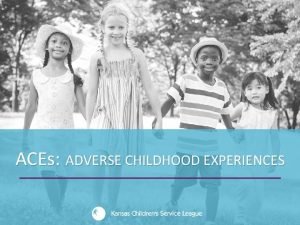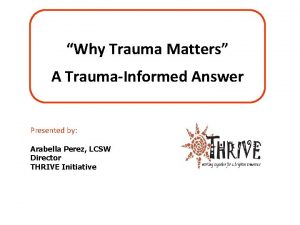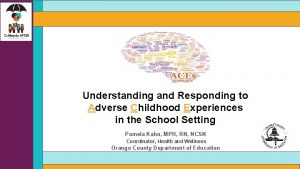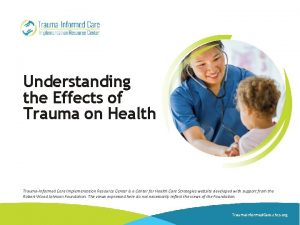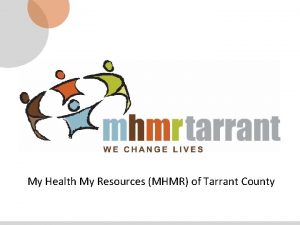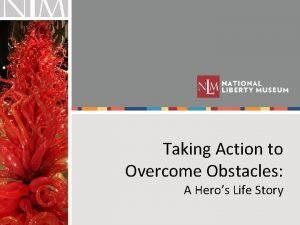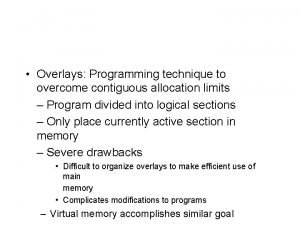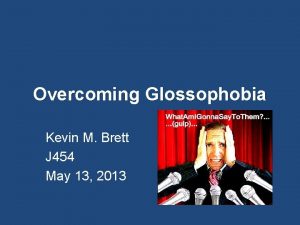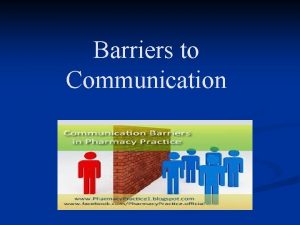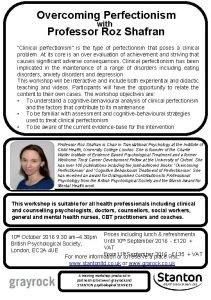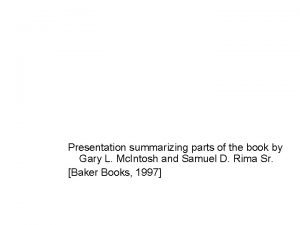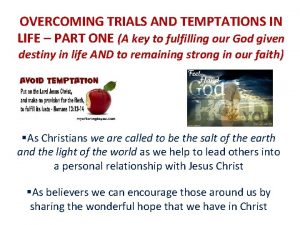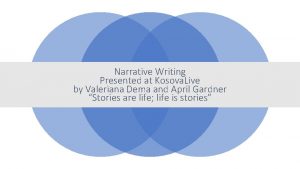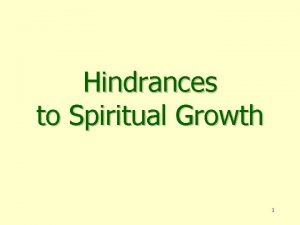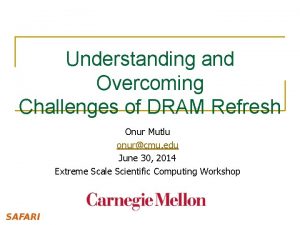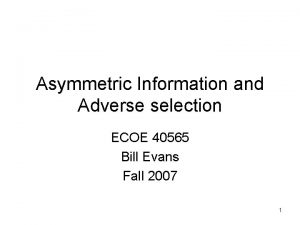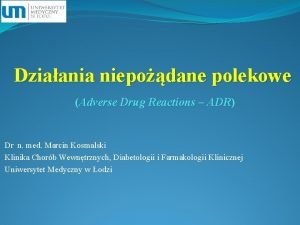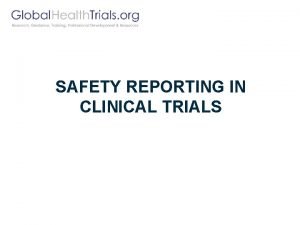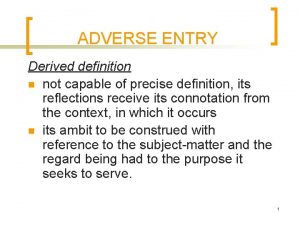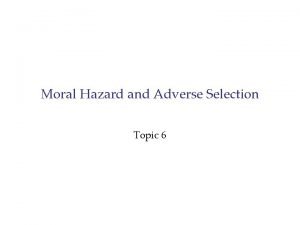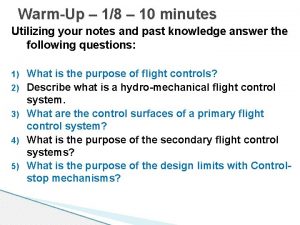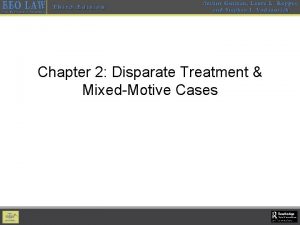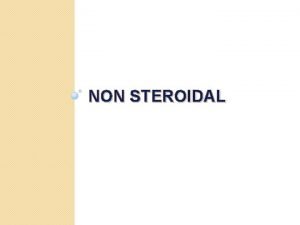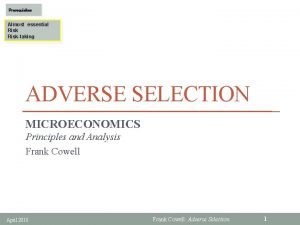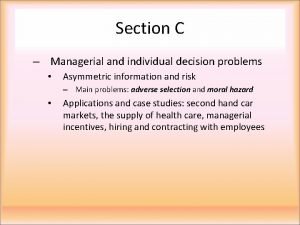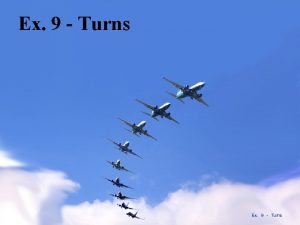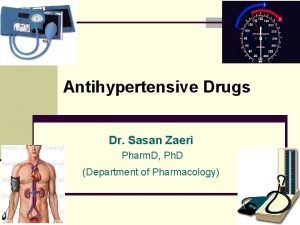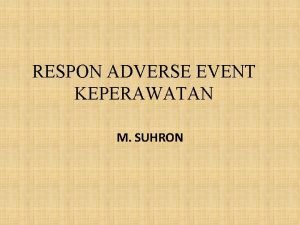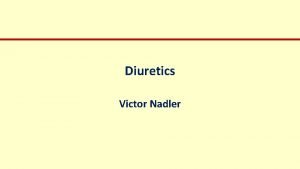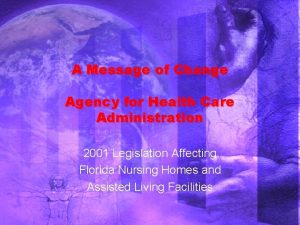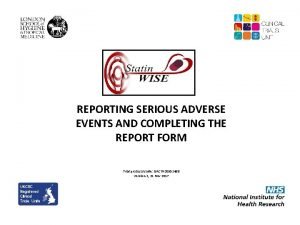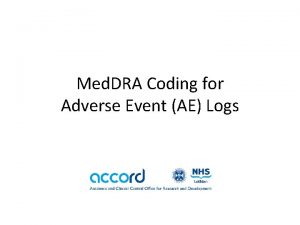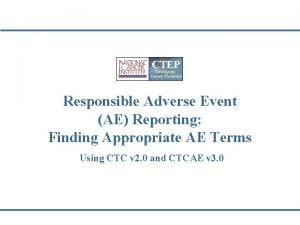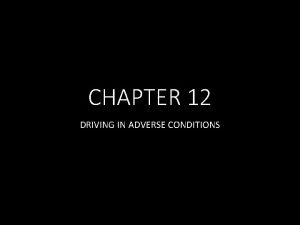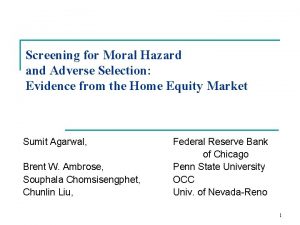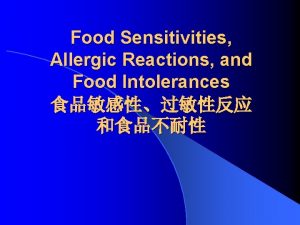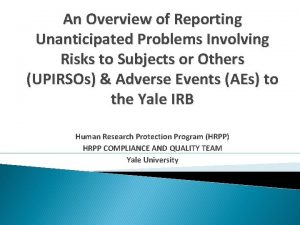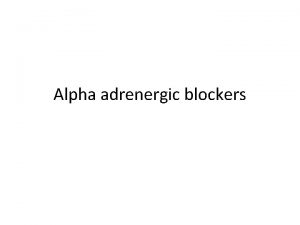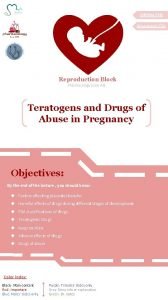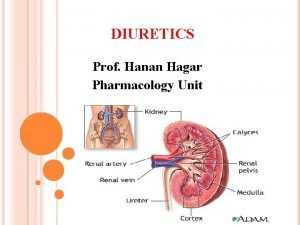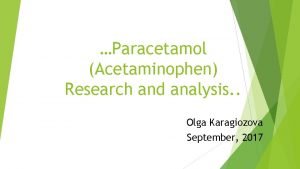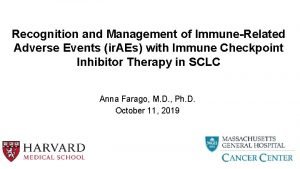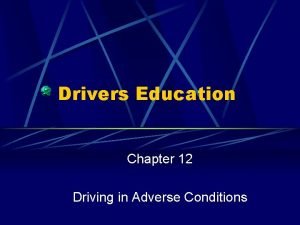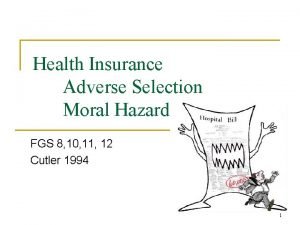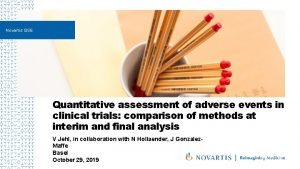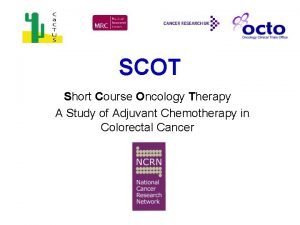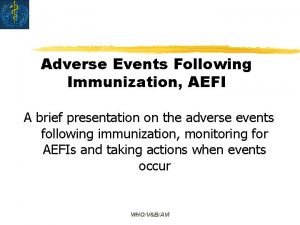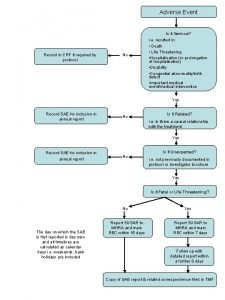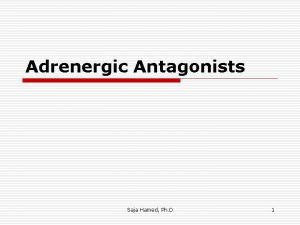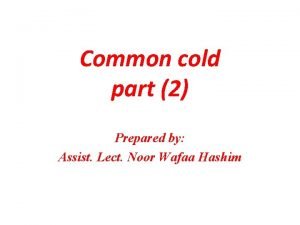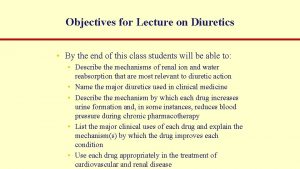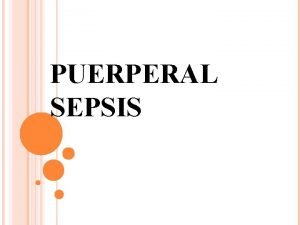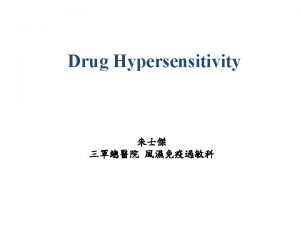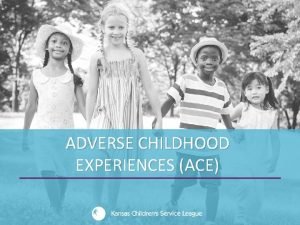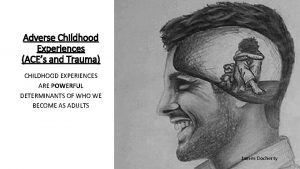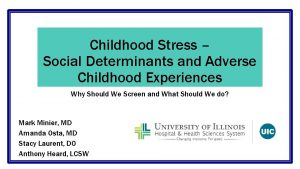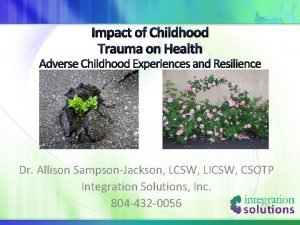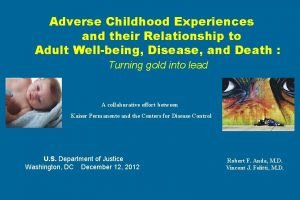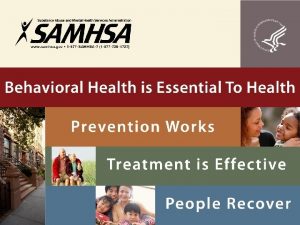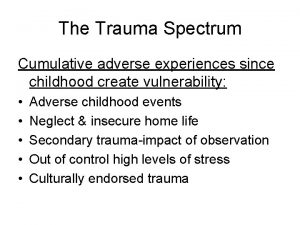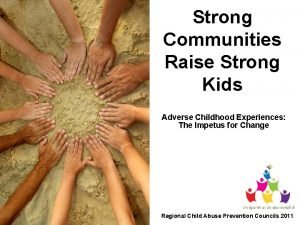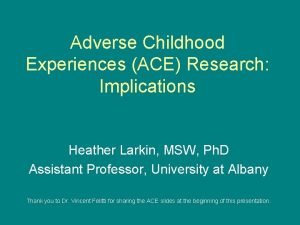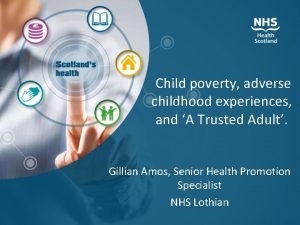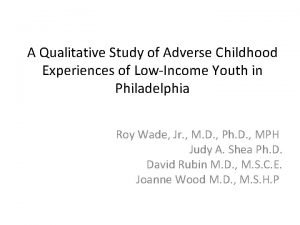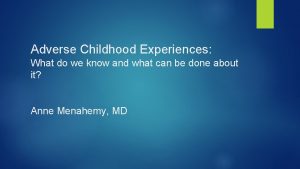Overcoming Adverse Childhood Experiences Creating Hope for a


































































- Slides: 66

Overcoming Adverse Childhood Experiences: Creating Hope for a Healthier Arizona Public Health Association Spring Conference April 9, 2015 Marcia Stanton, MSW

The Birth Lottery

Future Prosperity of Any Society • Depends on a continuing investment in the healthy development of the next generation.

Scientific Advances • Are driving a paradigm shift in understanding how child development impacts human health and disease across the lifespan

The Adverse Childhood Experiences (ACE) Study • “Probably the most important public health study you never heard of” • ACEs sometimes referred to as toxic stress or childhood trauma

Science is Clear • Toxic stress caused by ACEs can profoundly alter the otherwise healthy development of a child • “Children’s exposure to ACEs is the greatest unaddressed public health threat of our time. ” Dr. Robert Block, former president, American Academy of Pediatrics

Getting on Board • Public and policymakers are catching on to science of toxic stress • Prestigious organizations collecting and reporting on data


ACEs Legislation • Washington, Wisconsin, Vermont, California • Could Arizona be next?

Two Categories of ACEs 2) Household Dysfunction 1) Abuse or Neglect - Recurrent physical abuse – Alcohol or drug abuser – Incarcerated household member - Recurrent emotional – Someone chronically depressed, abuse suicidal, institutionalized or - Sexual abuse mentally ill - Emotional or physical – Mother being treated violently neglect – One or no parents

What Do ACEs Look Like?

Why is This Study So Important? ACEs are: • Surprisingly common • Strong predictors of later social functioning, wellbeing, health risks, disease, and death

ACE Scores • 1/3 of Adults have ACE Score of 0 • Majority of adults with ACE score of 0, have few, if any, risk factors for diseases that are common causes of death in US

If Any One ACE is Present • 87% chance at least one other ACE is present, and • 50% chance of 3 others

• 4 or more may result in multiple risk factors for chronic diseases or disease themselves • 6 or more may result in a 20 year decrease in life expectancy

Out of 100 people… 33% Report No ACEs 51% Report 1 -3 ACEs 16% Report 4 -10 ACEs With 3 ACEs With 7+ ACEs 1 in 16 smokes 1 in 9 smokes 1 in 69 are alcoholic 1 in 6 are alcoholic 1 in 480 use IV drugs 1 in 43 use IV drugs 1 in 30 use IV drugs 1 in 14 has heart disease 1 in 7 has heart disease 1 in 6 has heart disease 1 in 96 attempts suicide 1 in 10 attempts suicide 1 in 5 attempts suicide

ACEs are Interrelated and Predictive Without interruption, ACEs escalate across generations

ACEs Have Cumulative Stressor Effect It’s the number of different categories, not the intensity or frequency, that determine health outcomes

Evidence Suggests • Many chronic diseases in adults are determined decades earlier, by experiences in childhood • Risk factor/ behaviors for these diseases are initiated during childhood and adolescents and continue into adult life

Solutions • What are conventionally viewed as Public Health problems are often personal solutions to long-concealed adverse childhood experiences.

It’s Not All About High Risk Coping Measures • Even if individuals with high ACE Scores do not adopt high risk behaviors, they are still much more likely to have negative health consequences

Toxic Stress • “Extreme, frequent or extended activation of the body’s stress response, without the buffering presence of a supportive adult. ” Sara B. Johnson, et al. , The science of early life toxic stress for pediatric practice and advocacy, 131 PEDIATRICS 319 (2013), available at http: //pediatrics. aappublications. org/content/131/2/319. full

Toxic Stress Early in Development • Affects functioning of 3 highly integrated systems: – the immune system – the neuroendocrine system – the central nervous system (Danese & Mc. Ewen, 2012)

Children and Stress • Biologically predisposed to more physiologic stress • Brain structures that modulate this stress mature later • Young children need safe, stable, and nurturing relationships to assist them in regulating their stress

“The 4 th Vital Sign” 1) Respiration 2) Heart Rate 3) Blood pressure 4) Relationships To heal from toxic stress, children need recognition and understanding from their caregivers

Brain Architecture • Built in a cumulative, bottom-up manner • Solid foundation required for future skills • Interaction between genes and experience shapes the architecture of the developing brain

Brain Plasticity Declines with Age • Brain’s ability to rewire itself in response to changes in the environment is waning by kindergarten • Remediation, while possible, is much more difficult

Getting It Right the First Time • Creating the right conditions in early childhood is more effective and far less costly than addressing a multitude of problems later on

Consequences of Not Getting It Right

Impact of Stress on Children • Flight, fight or fright (freeze) response • Short attention span • Struggle learning; fall behind in school • Respond to world as constant danger • Distrustful of adults • Unable to develop healthy peer relationships • Feel failure, despair

“Dropouts Cost AZ $7. 6 Billion” The Arizona Republic, June 26, 2014 • AZ Dept. of Education: 22 percent of Arizona 9 th graders will not finish high school • By 2018, more than 60 percent of jobs in AZ will require some postsecondary education

ACEs are a Pipeline to Prison Childhood and Adult Trauma Experiences of Incarcerated Persons and Their Relationship to Adult Behavioral Health Problems and Treatment) Intl. Journal of Environ Res Public Health. 2012 May; 9(5): 1908– 1926. Published online 2012 May 18. Healing Invisible Wounds: Why Investing in Trauma-Informed Care for Children Makes Sense.

ACEs and Addiction Findings suggest: • A major factor, if not the main factor, underlying addiction is ACEs that have not healed and are concealed from awareness by shame, secrecy, and social taboo. “It’s hard to get enough of something that almost works. ” Vincent Felitti, MD

ACEs in Foster Care • More than half of kids reported for CM experienced 4 or more ACEs by time of contact with child welfare • More than 90% referred to child welfare have experienced multiple ACEs (Nat’l Survey Child and Adolescent Well-Being (NSCAW), No. 20: Adverse Child Experiences in NSCAW, 2013)

Economic Impact • US - $5. 8 Trillion • AZ - $141. 8 Billion Total Estimated Lifetime Impact of All Social Costs and Lost Earnings Associated with Non. Fatal and Fatal Child Maltreatment Incidence in 2014 on Business Activity: (Suffer the Little Children Report, November 2014, The Perryman Group)

National Survey of Children’s Health • Telephone survey • Tracks parent report of their • children’s ACEs (does not include child maltreatment or neglect) • 2011/12 data • http: //www. childhealthdata. org

Arizona Children • Estimated 69, 213 have 5+ ACEs • Ethnic minority children have disproportionately higher share of 6+ ACEs

AZ Kids with 5+ ACES Would Fill University of Phoenix Stadium

Out of 100 people… 33% Report No ACEs 51% Report 1 -3 ACEs 16% Report 4 -10 ACEs With 3 ACEs With 7+ ACEs 1 in 16 smokes 1 in 9 smokes 1 in 69 are alcoholic 1 in 6 are alcoholic 1 in 480 use IV drugs 1 in 43 use IV drugs 1 in 30 use IV drugs 1 in 14 has heart disease 1 in 7 has heart disease 1 in 6 has heart disease 1 in 96 attempts suicide 1 in 10 attempts suicide 1 in 5 attempts suicide

Arizona Children, 0 – 17 (2011/2012 National Survey of Children’s Health) • No ACEs - 42. 5 % • One ACE - 26. 4 % • Two + ACEs - 31. 1 % (Natl. average: 22. 6 %)

Arizona Children, 0 - 5 (2011/2012 National Survey of Children’s Health) • No ACEs – 54. 7% • One ACE – 28. 6% • Two or More ACEs – 16. 7% (National Average 12. 5%)

Arizona Children, 12 – 17 (2011/2012 National Survey of Children’s Health) • 44. 4% have experienced two or more ACEs (Natl. average 30. 5%)

Some AZ Counties Hit Harder

Special Health Care Needs

Health Status Rated Fair/Poor

Presence of Emotional, Behavioral or Developmental Needs

AZ Children Overweight or Obese

Missed 11 or More Days of School

Repeated 1 or More Grades

Received Treatment from Mental Health Professional Past 12 Months

So Where is the Hope? • Better understanding of the mechanism • ACEs are not destiny • Helps us develop better responses and reduces judgment • Multiple evidence-based approaches to healing

Positive Factors That Counterbalance Adversity

At Least 1 Stable, Caring and Supportive Relationship

Building Sense of Mastery over Their Life Circumstances

Strong Executive Function and Self. Regulation Skills

Affirming Faith or Cultural Traditions

Huge Social, Public Health Problem – Current investments in response; prevention must be part of solution – Broad societal and community level change needed – Individual level change not sufficient



What It Takes “If we want breakthrough outcomes for kids, then we have to transform the lives of the adults that care for them. ” (Jack Shonkoff, MD)

Two Generation Approach • Connect the dots between past, present and future • “Parents’ outcomes and children's outcomes are so tightly linked, developing twogenerational policies is imperative, not optional. ”

Requires a Public Health Response • Need Coordinated Multi-level Prevention Effort that Reaches Every Community

Where to Start? • Increase Public Understanding • Enhance Capacity of Families and Providers to Prevent and Respond • Improve Effectiveness of Messages • Promote Identification and Early Intervention • Continue to Collect and Share Data

A Better World • Eliminating toxic stress among children would have a profound impact on the health and well-being of individuals and entire populations.

ACEs Often Last a Lifetime. . . But They Don’t Have To • Healing can occur • Cycle can be broken • Safe, stable, nurturing relationships heal parent and child

In Summary “It is easier to build strong children than to repair broken men” ~ Frederick Douglass (1817 -1895) Marcia Stanton, MSW, mstanto@phoenixchildrens. com
 Adverse childhood experiences study
Adverse childhood experiences study Adverse childhood experiences study
Adverse childhood experiences study What are adverse childhood experiences
What are adverse childhood experiences Adverse childhood experiences study
Adverse childhood experiences study Adverse childhood experiences study
Adverse childhood experiences study Early childhood
Early childhood Helen keller overcoming obstacles
Helen keller overcoming obstacles Coalescing holes in operating system
Coalescing holes in operating system Knowledge2practice
Knowledge2practice What is communication barriers
What is communication barriers Overcoming life issues
Overcoming life issues Roz shafran perfectionism
Roz shafran perfectionism Overcoming the dark side of leadership
Overcoming the dark side of leadership Overcoming the monster examples
Overcoming the monster examples Overcoming trials and temptations
Overcoming trials and temptations Overcoming
Overcoming Overcoming barriers to employment
Overcoming barriers to employment Overcoming hindrances to spiritual development
Overcoming hindrances to spiritual development Dram refresh failure
Dram refresh failure Scripture about overcoming adversity
Scripture about overcoming adversity Beta blocker examples
Beta blocker examples Adverse selection
Adverse selection Azalastyna
Azalastyna Adverse reaction definition
Adverse reaction definition Irremedial
Irremedial Adverse selection
Adverse selection Adverse yaw
Adverse yaw Adverse treatment
Adverse treatment Mechanism of action of acetaminophen
Mechanism of action of acetaminophen What is adverse selection
What is adverse selection Serious adverse event reconciliation
Serious adverse event reconciliation Adverse selection
Adverse selection Adverse yaw
Adverse yaw Beta blocker moa
Beta blocker moa Adverse event adalah
Adverse event adalah Harley nadler
Harley nadler Ahca adverse incident reporting
Ahca adverse incident reporting Adverse events in hospital
Adverse events in hospital What does skid mean in driving
What does skid mean in driving Ae coding
Ae coding Adverse event
Adverse event If you are driving under adverse conditions
If you are driving under adverse conditions Sitaglimet
Sitaglimet Adverse selection
Adverse selection Adverse food reactions
Adverse food reactions Unanticipated problem vs adverse event
Unanticipated problem vs adverse event Alpha blocker
Alpha blocker Drugs that cross placenta mnemonic
Drugs that cross placenta mnemonic Classification of diuretics
Classification of diuretics Effects of paracetamol
Effects of paracetamol Adverse events in hospital
Adverse events in hospital Overdriving headlights definition
Overdriving headlights definition Adverse reaction definition
Adverse reaction definition What is adverse selection
What is adverse selection Novartis adverse event reporting
Novartis adverse event reporting Chapter 12 driving in adverse conditions
Chapter 12 driving in adverse conditions Adverse selection
Adverse selection Adverse reaction definition
Adverse reaction definition Adverse events following immunization (aefi) course answers
Adverse events following immunization (aefi) course answers Adverse event crf
Adverse event crf Adverse effect of alpha blockers
Adverse effect of alpha blockers Paracetamol adverse effects
Paracetamol adverse effects Loop diuretics adverse effects
Loop diuretics adverse effects Adverse events in hospital
Adverse events in hospital Definition of adverse event
Definition of adverse event Tools to help solve adverse selection problems
Tools to help solve adverse selection problems Is a near miss a sentinel event
Is a near miss a sentinel event
